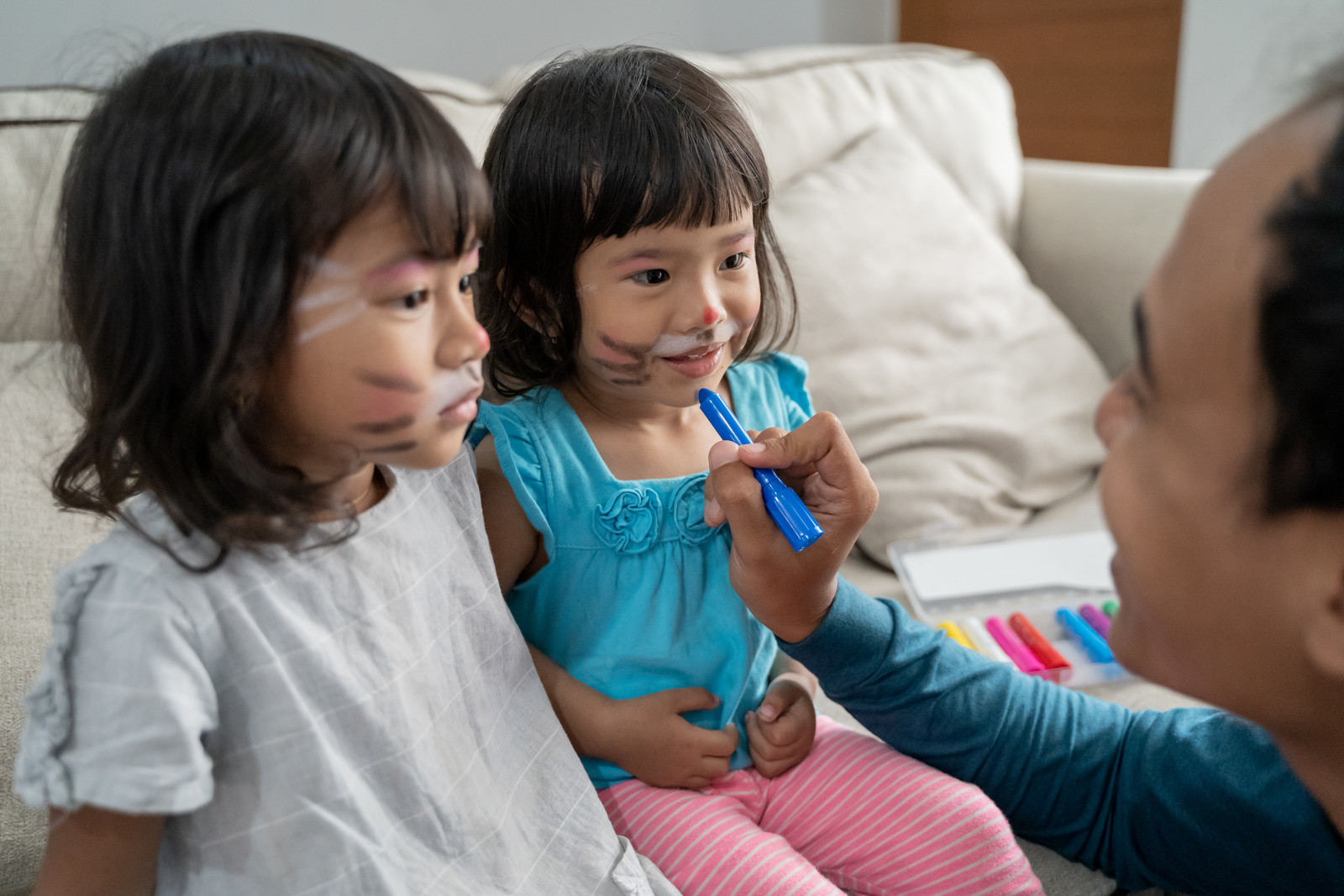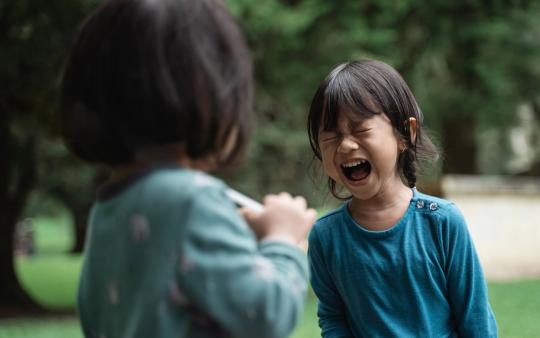There are likely few things more provocative to a parent than attacking behaviour from kids. The hardest challenge arises when our own kids are attacking each other, and our loyalties are stretched in two directions. Our instincts to protect the attacked child will jump into gear as well as our frustration. But when we deal with the behaviour of the one doing the attacking without thinking about preserving the relationship, we can make matters worse. The question is: how do we lead our kids out of attack mode and into mature ways of relating?
Aggression is defined as the impulse to attack or lash out. It can be expressed either physically or verbally. The primary emotion that drives attacking behaviour is frustration, which is hard-wired into the brain. It is often confused with anger but anger is a manifestation of frustration where blame has been assigned to someone or something. Like anger, the root of attack and aggression stems from the singular emotion of frustration. The question is where does frustration come from in the first place?
There are many things in life that must be faced that are futile or will not change. This can include losing, being upset, not being the best at everything, being unable to change people’s minds or decisions, not being permitted to do whatever you want, having to put up with siblings, share your parent, or having to let go of good experiences or things. The biggest sources of frustration for a child are relationships that don’t work the way they want them to and limits and restrictions that are placed on them. Frustration isn’t always expressed towards the real source of it either. From a hard day at school to being frustrated with parents’ rules, it is common for siblings to be a target for displaced frustration.

Aggression and child anger management
Emotions serve a purpose and the job of frustration is to change something that isn’t working or to get something to stop, but sometimes change isn’t possible. For example, a parent may not buy that coveted toy every time you want one and a sibling might not want to share with you. If sadness or disappointment aren’t the emotions the child defaults to, like a volcano that explodes under pressure, the energy will commonly emerge in the form of attack as a release for the frustration, erupting onto whoever and whatever is around them.
Aggression has many forms including tantrums, biting, screaming, stomping, hitting, throwing, self-attack, sarcasm, ignoring, hostility, irritability, or rudeness. Each child seems to have a particular bent for expressing foul frustration, with young kids typically detonating in a physical form. With ideal development, a child over the age of four will increasingly express frustration verbally and use their words as the attacking object. For example, a father told me he directed his four-year-old son to use his words for his frustration instead of hits. The child then shocked his father with: “I just want to pee on you Daddy.”
When you can’t get what you want, the frustration is meant to try and change things for the better. Sometimes we are the ones that need to change and to feel the natural sadness that comes with this. Aggression will result if a child does not emotionally adapt and feel the futility of not always getting what they want.
Exit plans: turning anger into play
In an effort to have kids “cut it out” and “calm down,” adults may use discipline tactics that only exacerbate a child’s frustration. Time-outs, yelling, consequences, and alarming kids with threats will likely increase frustration and make the child more prone to attack. Additionally, the more you try to control an out-of-control child, the more you put your relationship in jeopardy. At the same time, we cannot just sit idly by and allow other kids to get hurt by failing to lead.
When a child is full of attacking energy, it is important to maintain the lead and create an exit from the situation or environment when possible. Trying to make headway with a child when they are full of frustration (and likely us too), is foolhardy. We can typically expect better results when their emotions have been expressed and are less intense. If we can lead them to their sadness and tears in an effective and caring way, they will be better able to cope with and learn from the futilities that are in their life. As with so many issues when it comes to children, the solution is often found through play.

Self-regulating emotions via play
What can we do when children seem to bounce from one tantrum or attacking behaviour to the other? Sometimes their emotional systems have shifted into overdrive and attacking energy is around every corner. Some of the signs of emotional defense include a lack of soft tears when distressed, habitual eruptions of attacking energy, and a restlessness from morning to night. How can we make headway when a child is stuck in foul frustration?
Play can be a wonderful softening agent when aggression is high. When you are at play, nothing is real, and as long as people are safe and not really attacked, this emotional energy can be expelled safely in creative ways. You can start by trying to engage the child in some form of pretend aggression such as war games (with cardboard swords), play fighting (with soft pillows) playing at being hurt (while moaning in exaggerated, comical pain), or mock aggression (growling like a bear, roaring like a lion, or barking like a dog). For example, one mother I knew used to play “honey badgers” (a notoriously ferocious and tough mammal) with her son and pretend to be aggressive and full of attacking energy. The beautiful thing about play is the brain doesn’t distinguish between what is real or pretend, thus providing the same release for the feelings of frustration.
The emotion of frustration is also expelled by play activities that try to change things or alter their form. You help express a child’s frustration when you lead them to build or fix things, reassemble and reorder them, destroy or take apart, craft, make, grow, or plant. Once a child has had time to play out their frustration and express emotion, they may be softer and easier to deal with, and may be more likely to find their words for their feelings or to be led to their sadness or disappointment.

Understanding child frustration
Managing aggression in children is primarily about reducing their frustration and helping them have a relationship with their strong emotions, while protecting other children. The good news is, with ideal development, a child should be able to temper their strong reactions between five and seven years of age. Sensitive kids might need a little more time with the shift to greater impulse control and emotional regulation, usually arriving around seven to nine years of age. With sufficient brain development in the prefrontal cortex, maturity naturally happens, and children become able to resist the impulse to lash out when stirred up by all the things they cannot change.
Our kids are not born with words for their feelings and need adults to teach them a language to reflect their internal world. We can help facilitate alternate outcomes to frustration, such as putting words to their feelings. When we focus on their frustration (as opposed to focusing on the attack, aggression, or anger), we can teach them socially appropriate ways to deal with their emotions and show them our empathy. This starts with inviting them to express what isn’t working for them or needs to change. We can then come to their side to recognize their feelings and lead them to understand how this emotion is stirred up. It is as simple as acknowledging that it is hard when we don’t get what we want or when someone doesn’t share with us.
We can also facilitate an alternate response to frustration by encouraging our kids to seek our help first when things aren’t working. You can ask them to come and get you or to use their words and call for you when they are having trouble. Knowing your child as well as you do, you can also work with them ahead of incidents, rather than in the middle of the attack, and solicit their good intentions for behaviour. For example, you might say, “Can I count on you to not grab your friend’s toys and to wait your turn?” It is far easier to get ahead of a problem than to deal with it in the heat of the moment when frustration is high.
To effectively address a frustration or aggression problem we will need to turn to the solutions that preserve our relationship while patiently steering the child towards greater maturity through strategies they can utilize. When we find a way to address the frustration that stirs kids up when the world around us cannot be changed, we help them adapt and navigate difficult experiences. As they grow, this will build trust between us and leave them to continue to seek our leadership when they need it.
You may also enjoy: Helping Your Toddler Work through Anger, Caring Connections: Teaching Children to Apologize Sincerely, and Why Fighting Siblings Are Like Lemonade.






